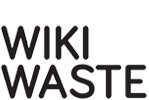Healthcare Waste: Difference between revisions
Imported from text file |
m Added reference |
||
| Line 1: | Line 1: | ||
[[Category:Tonnage & Waste Types]] | [[Category:Tonnage & Waste Types]] | ||
Waste generated by health care activities includes a broad range of materials, from used needles and syringes to soiled dressings, body parts, diagnostic samples, blood, chemicals, pharmaceuticals, medical devices and radioactive materials. Due to the variety of waste produced, healthcare waste has the potential to cause significant human health and environmental impacts <ref> [[WHO]] 2019 </ref>. | Waste generated by health care activities includes a broad range of materials, from used needles and syringes to soiled dressings, body parts, diagnostic samples, blood, chemicals, pharmaceuticals, medical devices and radioactive materials. Due to the variety of waste produced, healthcare waste has the potential to cause significant human health and environmental impacts <ref> [[WHO]], 2019. Health-care waste. [online] World Health Organization. Available at: https://www.who.int/topics/medical_waste/en/ [Accessed 31 Oct. 2019]. </ref>. | ||
==References== | |||
<references /> | |||
Revision as of 16:24, 12 November 2019
Waste generated by health care activities includes a broad range of materials, from used needles and syringes to soiled dressings, body parts, diagnostic samples, blood, chemicals, pharmaceuticals, medical devices and radioactive materials. Due to the variety of waste produced, healthcare waste has the potential to cause significant human health and environmental impacts [1].
References
- ↑ WHO, 2019. Health-care waste. [online] World Health Organization. Available at: https://www.who.int/topics/medical_waste/en/ [Accessed 31 Oct. 2019].
